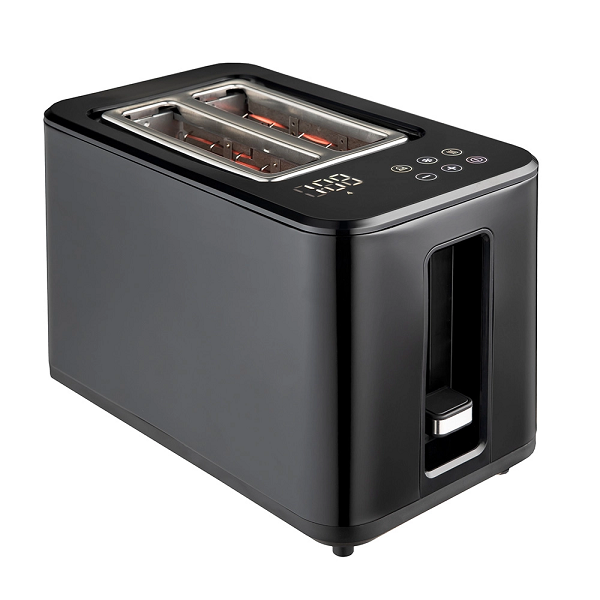

Views: 260 Author: Vickey Publish Time: 2024-04-07 Origin: Site








There's something undeniably satisfying about biting into a perfectly toasted slice of bread – crispy on the outside, warm and fluffy on the inside. But have you ever wondered how your toaster achieves that golden brown perfection every time? In this comprehensive guide, we'll delve into the science behind how toasters work to create the ideal toast. From the heating elements to the browning control settings, understanding the inner workings of this kitchen appliance will give you a newfound appreciation for your morning toast routine.
Toasters are simple yet ingenious kitchen appliances designed to evenly brown slices of bread by exposing them to controlled heat. Whether you have a classic 2-slice toaster or a larger 4-slice model, the basic principles of operation remain the same. Let's explore the key components that make toasters tick:
At the heart of every toaster are the heating elements – metal wires or coils that generate heat when electricity passes through them. These heating elements are typically located inside the toaster's slots, where they come into direct contact with the bread.
When you press down the toaster's lever or slide the bread into the slots, the heating elements spring into action, rapidly heating up to toast the bread. The intensity of the heat can be adjusted using the toaster's browning control settings, allowing you to customize the level of browning to your preference.
Toasters come with one or more bread slots – rectangular openings where you insert the slices of bread to be toasted. The number of slots varies depending on the toaster model, with 2-slice and 4-slice toasters being the most common options available.
The bread slots are designed to hold the bread securely in place while it undergoes the toasting process. Some toasters feature wider slots to accommodate thicker slices of bread or specialty items like bagels or artisanal bread.
One of the key features of any toaster is the browning control settings, which allow you to adjust the level of browning or toasting to suit your taste preferences. Typically, these settings range from light to dark, with additional options for specific browning levels in between.
Adjusting the browning control setting alters the duration and intensity of the heat applied to the bread, resulting in lighter or darker toast. Experimenting with different settings allows you to achieve the perfect level of crispiness and flavor for your toast.

Now that we've covered the basic components of a toaster let's explore the step-by-step process of how toasters work to achieve perfectly browned toast every time:
When you plug in your toaster and select your desired browning setting, electricity flows through the heating elements, causing them to heat up rapidly. The heating elements reach temperatures of up to 300-500°F (150-260°C), depending on the toaster model and settings.
As the heating elements warm up, they begin to radiate heat into the bread slots, creating an environment conducive to toasting.
Once the toaster reaches the desired temperature, it's time to insert the slices of bread into the slots. Place the slices vertically into the slots, ensuring they are positioned evenly and not overlapping.
The toaster's spring-loaded mechanism holds the bread in place and lowers it into the toaster, bringing it into direct contact with the heating elements.
As the bread makes contact with the hot heating elements, it begins to undergo the toasting process. The heat from the elements causes the moisture in the bread to evaporate, resulting in the formation of steam.
At the same time, the sugars and starches present in the bread undergo the Maillard reaction – a chemical reaction between amino acids and reducing sugars that gives toasted foods their characteristic brown color and savory flavor.
The duration of the toasting process is controlled by the toaster's built-in timer, which is determined by the selected browning control setting. A lighter setting will result in shorter toasting times and lighter-colored toast, while a darker setting will produce darker and crispier toast.
As the toasting process progresses, the browning control setting regulates the amount of heat applied to the bread, ensuring consistent and even browning across the surface of each slice.

Once the toasting cycle is complete, the toaster's timer triggers a mechanism that releases the spring-loaded lever or ejects the bread from the slots. The slices of toast pop up and out of the toaster, ready to be enjoyed.
It's essential to remove the toast promptly from the toaster to prevent it from overcooking or becoming too crisp. Transfer the toast to a plate or wire rack to cool slightly before serving.
While the basic principles of how toasters work remain the same, there are several types of toasters available on the market, each offering unique features and capabilities:
A 2-slice toaster is a compact and versatile option ideal for individuals or small households. It features two bread slots and typically offers basic browning control settings, making it perfect for everyday toasting needs.
A 4-slice toaster is a larger option designed to accommodate the toasting needs of larger families or gatherings. It features four bread slots, allowing you to toast twice as many slices of bread simultaneously.
Some 4-slice toasters come with additional features such as wider slots, bagel settings, and digital displays for added convenience and versatility.
In conclusion, the humble toaster is a marvel of modern kitchen technology, utilizing simple yet effective mechanisms to achieve perfectly browned toast with ease. From the heating elements to the browning control settings, every component plays a crucial role in the toasting process.
Whether you prefer a classic 2-slice toaster or a larger 4-slice model, understanding how toasters work allows you to make informed decisions when selecting the perfect toaster for your kitchen. So the next time you enjoy a slice of golden brown toast, take a moment to appreciate the science behind this beloved breakfast staple.